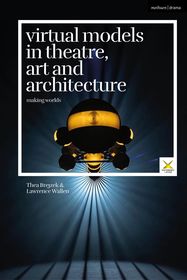
-
13% KEDVEZMÉNY?
- A kedvezmény csak az 'Értesítés a kedvenc témákról' hírlevelünk címzettjeinek rendeléseire érvényes.
- Kiadói listaár GBP 85.00
-
40 608 Ft (38 675 Ft + 5% áfa)
Az ár azért becsült, mert a rendelés pillanatában nem lehet pontosan tudni, hogy a beérkezéskor milyen lesz a forint árfolyama az adott termék eredeti devizájához képest. Ha a forint romlana, kissé többet, ha javulna, kissé kevesebbet kell majd fizetnie.
- Kedvezmény(ek) 13% (cc. 5 279 Ft off)
- Kedvezményes ár 35 330 Ft (33 647 Ft + 5% áfa)
Iratkozzon fel most és részesüljön kedvezőbb árainkból!
Feliratkozom
40 608 Ft

Beszerezhetőség
Még nem jelent meg, de rendelhető. A megjelenéstől számított néhány héten belül megérkezik.
Why don't you give exact delivery time?
A beszerzés időigényét az eddigi tapasztalatokra alapozva adjuk meg. Azért becsült, mert a terméket külföldről hozzuk be, így a kiadó kiszolgálásának pillanatnyi gyorsaságától is függ. A megadottnál gyorsabb és lassabb szállítás is elképzelhető, de mindent megteszünk, hogy Ön a lehető leghamarabb jusson hozzá a termékhez.
A termék adatai:
- Kiadó Bloomsbury Publishing (UK)
- Megjelenés dátuma 2025. november 27.
- Kötetek száma Hardback
- ISBN 9781350449800
- Kötéstípus Keménykötés
- Terjedelem208 oldal
- Méret 234x156 mm
- Nyelv angol
- Illusztrációk 35 bw illus 700
Kategóriák
Rövid leírás:
This volume argues that virtual models are dispositifs that act as critical instruments in theatre, art and architecture and propose counterpositions to dominant narratives.
TöbbHosszú leírás:
What is the impact of virtual models and realms in contemporary theatre, art and architecture?
This volume explores the evolution of virtual models, their transformative spatial potential, and their capacity for world-making using a range of case studies drawn from global contemporary theatre, art and architecture practice.
It draws upon a rich array of contemporary examples, including the Japanese artist collective Dumb Type, Chinese artist Lu Yang, USi??1?2-Iranian artist Morehshin Allahyari, Bji??1?2rk, and the UK research agency Forensic Architecture. In parallel, a historical overview focused on the formative years of digital society provides context to the rapid development of virtual technologies, including the work of architecture collectives Superstudio and Archigram and seminal art, performance and technology collaborations from 1960s New York onward, enabled by institutions such as MoMA and Bell Labs. Behind this inquiry is a historical and theoretical positioning of the immaterial and its relationship to the material. Discussing emerging forms of expanded reality (XR) as devices in the theoretical and cultural framework of the virtual model, this study reveals the processes made visible in exhibitions, installations and performances while focusing on overlapping spaces, narratives and actors as they contribute to constructing virtual worlds.
Virtual Models in Theatre, Art and Architecture: Making Worlds reframes the virtual model as dispositif at the interface of the real, the fictional and the virtual, encouraging the reader to critically consider how new technologies open new spaces for knowledge creation and creative expression.
Tartalomjegyzék:
List of Figures
Acknowledgements
Introduction
Chapter 1 - On the Virtual Model
The Site
The Virtual Model -Dispositifand Critical Instrument
The Imaginary and the Imagined
Model, Doppelgi??1?2nger and the Digital Twin
The Map and the Territory
The Real and the Virtual
The Locus of the Virtual
Chapter 2 - Art, Science and Engineering - Imagining the Virtual
Media Art, Visionary and Virtual Architecture
New York as Site for Experimental Art and Technology
9 Evenings: Theatre and Engineering
The Machine as Seen at the End of the Mechanical Age
Architectural Imaginaries
Utopic Vision of a Future City
Forensic Architecture's Virtual Models
Performance, Media and Architecture
Chapter 3 - Performing the Virtual Model in the Material World
Deconstructing Nation, Gender, Race
Liminal Spaces - Dumb Type
Body and Code - LuYang
Digital Colonialism - Morehshin Allahyari
Imagining the Future - Yael Bartana
Other Spaces
Chapter 4 - Immersion, Animism and Technology
Between the Virtual and the Real
Deconstruction and Myth - Romeo Castellucci
Metamorphoses and Masks - Bji??1?2rk
Embodied Experiences - Olafur Eliasson
Duality and Transformation - Apitchong Weerasethakul
Memory, Iconoclasm, Animism
Chapter 5 - Researching the Virtual
The Art and Science Lab
The Emergence of the Immaterial
Virtual Reality Typologies
Ontologies of the Virtual
From a Sense of Proximity to a Sense of Distance
To Be A Machine
But what happens if the Theatre stops Working?
Notes
References
Index




